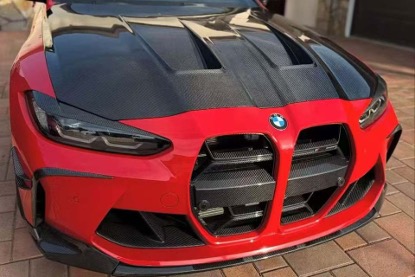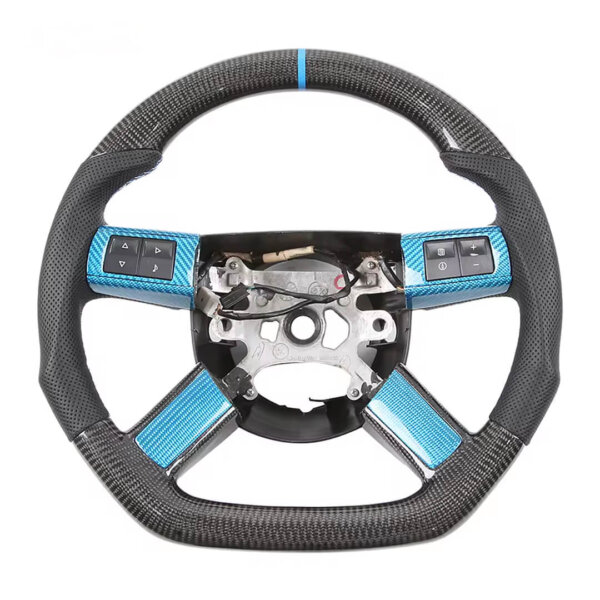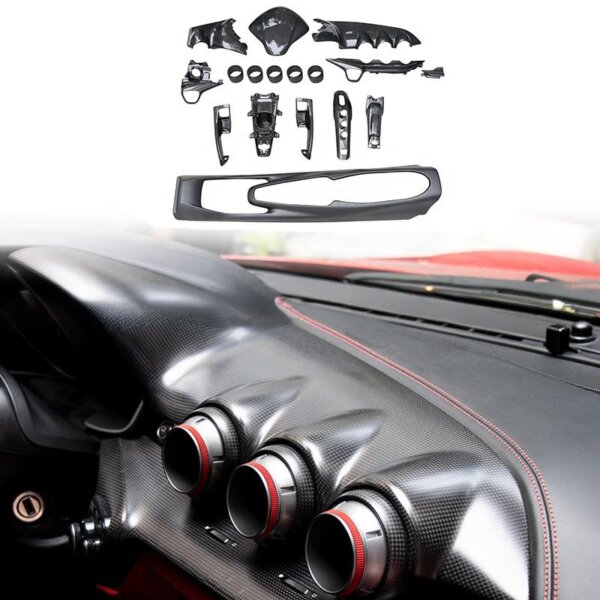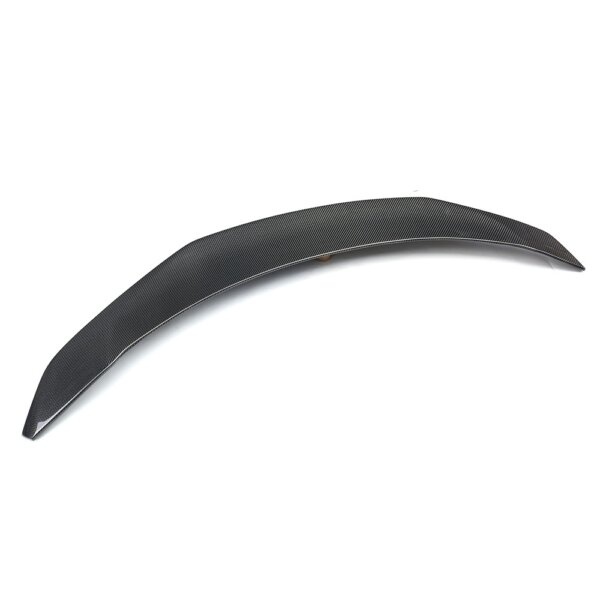Carbon Fiber Car Parts: What They Do and Why They Improve Performance
In the ever-evolving world of automotive engineering, the quest for speed, efficiency, and performance is relentless. For decades, manufacturers have explored a myriad of materials to build lighter, stronger, and faster vehicles. Among these, one material has consistently stood out for its revolutionary properties: fibre de carbone. Once the exclusive domain of aerospace and elite motorsports, carbon fiber is increasingly finding its way into high-performance and even mainstream automobiles. But what exactly does this high-tech material do to a car? This ultimate guide delves into the world of carbon fiber, exploring its composition, manufacturing, applications, and profound impact on vehicle performance.
Qu'est-ce que la fibre de carbone ?
Carbon fiber is a polymer, sometimes known as graphite fiber, that is renowned for being a very strong and lightweight material. To put its strength into perspective, carbon fiber is five times stronger than steel and twice as stiff, yet it weighs significantly less. This remarkable combination of properties makes it an ideal manufacturing material for a wide array of parts, from aircraft components to high-performance voitures en fibre de carbone.
The Basic Composition: From Polymer to Fiber
At its core, carbon fiber consists of incredibly thin strands of carbon atoms. These fibers, often just 5 to 10 micrometers in diameter (thinner than a human hair), are composed almost entirely of carbon atoms bonded together in microscopic crystals that are aligned parallel to the long axis of the fiber. It is this crystalline alignment that endows the fiber with its exceptional strength-to-volume ratio.
The journey to creating these powerful fibers begins with a precursor, which is typically an organic polymer with long strings of molecules held together by carbon atoms. Approximately 90% of all carbon fibers are produced using a synthetic polymer called polyacrylonitrile (PAN).

How Carbon Fiber is Made: The Manufacturing Process
The transformation from a polymer precursor to a finished carbon fiber component is a complex and energy-intensive process, which contributes to its high cost. The key stages include:
- Spinning: The PAN precursor is mixed with other ingredients and spun into fibers, which are then washed and stretched.
- Stabilizing: The fibers undergo a chemical alteration to stabilize their bonding, preparing them for the intense heat of the next stage.
- Carbonizing: In a furnace devoid of oxygen, the stabilized fibers are heated to temperatures exceeding 1,800°F (1,000°C). This extreme heat causes the atoms within the fibers to vibrate violently, expelling most non-carbon atoms and leaving behind tightly bonded carbon crystals.
- Treating the Surface: The surface of the carbon fibers is then oxidized to improve its bonding properties with other materials.
- Sizing and Weaving: Finally, the fibers are coated and wound onto bobbins. Thousands of these individual filaments are often bundled together to form a “tow,” which can then be woven into the characteristic fabric-like material that is often associated with carbon fiber.
To create a usable car part, this woven carbon fiber fabric is laid into a mold and impregnated with a resin, typically epoxy. The part is then cured under heat and pressure, often in a large oven called an autoclave, to harden the resin and form a solid, lightweight, and incredibly strong component.
The Key Properties: Why Carbon Fiber is a Game-Changer
The allure of carbon fiber in the automotive world stems from a unique combination of properties that are highly desirable for vehicle construction.
Incredible Strength-to-Weight Ratio
This is arguably the most significant advantage of carbon fiber. It boasts the highest strength and stiffness per density of any material, including metals like steel and aluminum. This means that a component made from carbon fiber can be just as strong as its steel counterpart while being significantly lighter. In fact, carbon fiber is about five times lighter than steel. This incredible strength-to-weight ratio allows for the production of vehicles that are both lightweight and structurally sound.
High Stiffness and Rigidity
Carbon fiber exhibits exceptional stiffness and rigidity, meaning it resists bending and twisting forces. In a car, this translates to reduced body flex and torsion, particularly during high-speed cornering. This enhanced structural integrity ensures that the vehicle responds precisely to driver inputs, leading to improved handling and stability.
Design Flexibility and Aesthetic Appeal
Unlike metals that are stamped and welded, carbon fiber can be molded into complex and aerodynamic shapes. This gives automotive designers greater freedom to create intricate body lines, integrated aerodynamic features, and bespoke interior components. Beyond its functional benefits, the distinctive woven pattern of carbon fiber has a modern and high-tech aesthetic that is highly sought after by car enthusiasts.
| Propriété | Fibre de carbone | Acier | Aluminium |
|---|---|---|---|
| Densité (g/cm³) | ~1.8 | ~7.85 | ~2.7 |
| Tensile Strength (MPa) | ~3500 | ~400 | ~310 |
| Stiffness (GPa) | ~230 | ~200 | ~70 |
| Relative Weight | Très faible | Haut | Faible |
| Résistance à la corrosion | Excellent | Pauvre | Bien |
How Carbon Fiber is Used in Car-Making: Key Applications
The versatility of carbon fiber allows it to be used in a wide range of automotive applications, from purely aesthetic enhancements to critical structural components.
Exterior Body Components: Hoods, Spoilers, and Diffusers
One of the most common applications of carbon fiber is in exterior body panels. By replacing steel or aluminum hoods, roofs, fenders, and doors with carbon fiber alternatives, manufacturers can significantly reduce the overall weight of the vehicle. Aerodynamic elements such as spoilers, diffusers, and front splitters are also frequently crafted from carbon fiber to enhance downforce and stability at high speeds without adding significant weight.
Structural Components: Monocoques and Chassis Reinforcements
In the realm of high-performance supercars and hypercars, carbon fiber is often used to construct the entire monocoque chassis—the structural core of the vehicle. A carbon fiber monocoque provides a lightweight yet incredibly rigid “safety cell” for the occupants. This technology, trickled down from Formula 1 racing, offers unparalleled strength and occupant protection.
Interior Parts: Seats, Dashboards, and Trim
The use of carbon fiber extends into the car’s cabin, where it serves both functional and aesthetic purposes. Carbon fiber seats are significantly lighter than their traditional counterparts and can be molded to provide excellent support. Dashboards, center consoles, steering wheels, and door trim are also frequently adorned with carbon fiber to create a sporty, high-end feel.
The EV Revolution: Components for High-Voltage Batteries
In the burgeoning electric vehicle (EV) market, lightweighting is crucial for maximizing range and efficiency. Carbon fiber is increasingly being used to create lightweight and robust enclosures for the heavy high-voltage battery packs, contributing to the overall weight reduction and performance of EVs.

What Carbon Fiber Actually Does to a Car’s Performance
The integration of carbon fiber into a vehicle has a direct and measurable impact on its performance characteristics.
Does Carbon Fiber Make Your Car Faster? The Power-to-Weight Answer
Yes, fundamentally, carbon fiber can make a car faster. The key lies in the improved power-to-weight ratio. By reducing the overall mass of the vehicle, the engine has less weight to move, resulting in quicker acceleration. In two otherwise identical cars, the one with more carbon fiber components will likely be lighter, allowing its powertrain to be used more effectively. While weight reduction has a more significant impact on acceleration than top speed, a lighter car will generally be quicker off the line and more responsive to throttle inputs.
Enhancing Handling and Agility Through Reduced Weight
A lighter car is inherently more agile. The reduction in mass means there is less inertia to overcome when changing direction, resulting in sharper turn-in and more precise steering. This is particularly noticeable in tight corners and during quick maneuvers. Furthermore, the high rigidity of carbon fiber components reduces body roll and chassis flex, keeping the car more stable and planted during spirited driving.
Improving Safety with Rigid Passenger Cells
Contrary to some misconceptions, carbon fiber cars can be incredibly safe. The material’s immense strength allows for the creation of extremely rigid passenger cells that maintain their integrity during a crash, reducing the risk of intrusion and protecting the occupants. Carbon fiber structures are also designed to absorb and dissipate impact energy in a controlled manner, often by shattering and breaking in a predictable way that channels crash forces away from the cabin.
The Practical Realities: Advantages and Disadvantages
While the performance benefits of carbon fiber are clear, there are also practical considerations to take into account.
The Biggest Challenge: Cost and Complex Repairs
The primary drawback of carbon fiber is its high cost. The complex and energy-intensive manufacturing process, coupled with the expensive raw materials, makes carbon fiber components significantly more expensive than their steel or aluminum counterparts. Repairing damaged carbon fiber can also be challenging and costly. Unlike metal, which can often be bent back into shape, damaged carbon fiber typically needs to be replaced entirely, requiring specialized expertise and equipment.
Environmental Impact: The Recycling Question
The environmental impact of carbon fiber production is another area of concern. The manufacturing process is energy-intensive, and recycling carbon fiber reinforced polymers (CFRP) is a complex challenge. However, the industry is actively researching and developing new technologies to improve the recyclability of carbon fiber and reduce its environmental footprint.
Carbon Fiber in Action: Real-World Examples
The application of carbon fiber is best illustrated by looking at how it is used in some of the world’s most advanced vehicles.
Supercars and Hypercars: Aston Martin Valkyrie & Ferrari
Automakers like Ferrari have been pioneers in the use of carbon fiber in road cars, a technology transfer from their extensive Formula 1 experience. The Ferrari F40, launched in 1987, was one of the first production cars to feature a body constructed almost entirely of composite materials, including carbon fiber. Modern Ferraris, such as the SF90 Stradale, continue to push the boundaries with features like all-carbon-fiber bulkheads. The Aston Martin Valkyrie is another prime example, featuring an all-carbon fiber tub to achieve an astonishingly low curb weight.
Mainstream Performance: BMW M Performance Parts
BMW has also been a leader in bringing carbon fiber to more mainstream performance vehicles. The BMW i3 electric car, for instance, features a carbon fiber passenger cell to offset the weight of its battery pack. Additionally, the BMW M Performance Parts catalog offers a wide range of aftermarket carbon fiber components, allowing owners to enhance the look and performance of their vehicles with everything from carbon fiber mirror caps to spoilers and front splitters.
The Future of Carbon Fiber in the Automotive Industry
The role of carbon fiber in the automotive industry is set to expand in the coming years. As manufacturing processes become more efficient and automated, the cost of carbon fiber is expected to decrease, making it more accessible for a wider range of vehicles.
Overcoming Environmental Challenges with New Technologies
The industry is actively working to address the environmental challenges associated with carbon fiber. Innovations in recycling and the development of more sustainable precursor materials are key areas of focus.
The Role of Forged Carbon and Other Innovations
New variations of carbon fiber, such as “forged carbon,” are also emerging. This technology, which involves using shorter, chopped carbon fibers mixed with resin, allows for the creation of complex shapes more quickly and with less waste. Expect to see continued innovation in carbon fiber technology as automakers strive to meet increasingly stringent emissions standards and consumer demands for high-performance, fuel-efficient vehicles. For those interested in premium performance upgrades, exploring options like those for a carbon fiber Lamborghini can provide a glimpse into the high-end applications of this material.
Foire aux questions (FAQ)
Are carbon fiber cars safe?
Yes, carbon fiber cars are designed to be extremely safe. Their high strength and rigidity create a robust passenger safety cell that can withstand significant impacts. In many high-end performance cars and racing series, carbon fiber is a regulated safety feature. Crash tests have shown that carbon fiber structures can effectively absorb and dissipate impact energy.
Why is carbon fiber so expensive?
The high cost of carbon fiber is due to several factors. The raw materials, particularly the PAN precursor, are expensive to produce. The manufacturing process is also complex, labor-intensive, and requires a significant amount of energy, all of which contribute to the final cost.
Can I add carbon fiber parts to my regular car?
Yes, the aftermarket for carbon fiber parts is extensive. Owners of many different types of vehicles can purchase a wide range of carbon fiber components, from aesthetic upgrades like interior trim and mirror caps to performance-enhancing parts like hoods, spoilers, and splitters. These additions can reduce weight and improve the look of a standard car.




